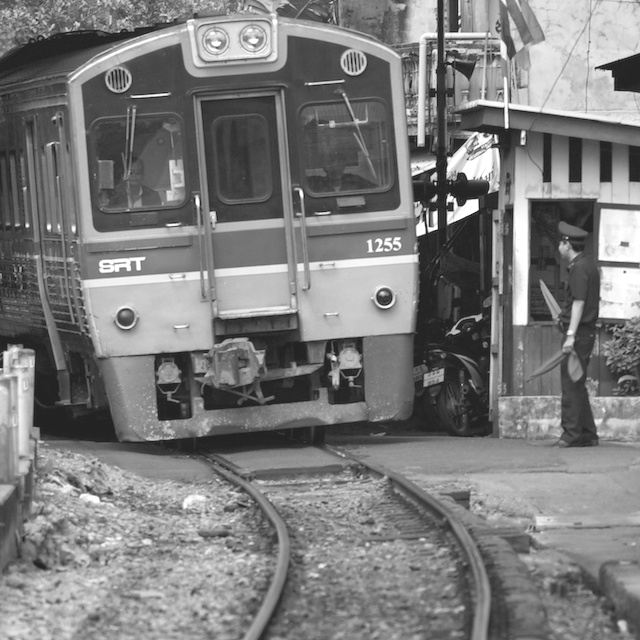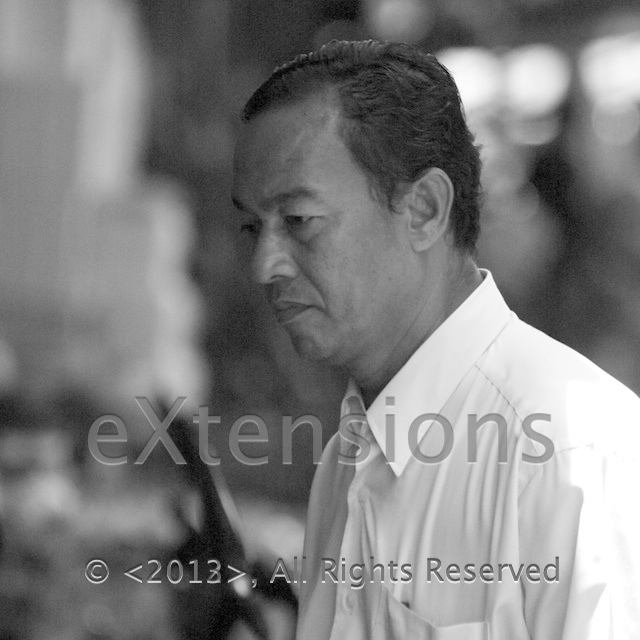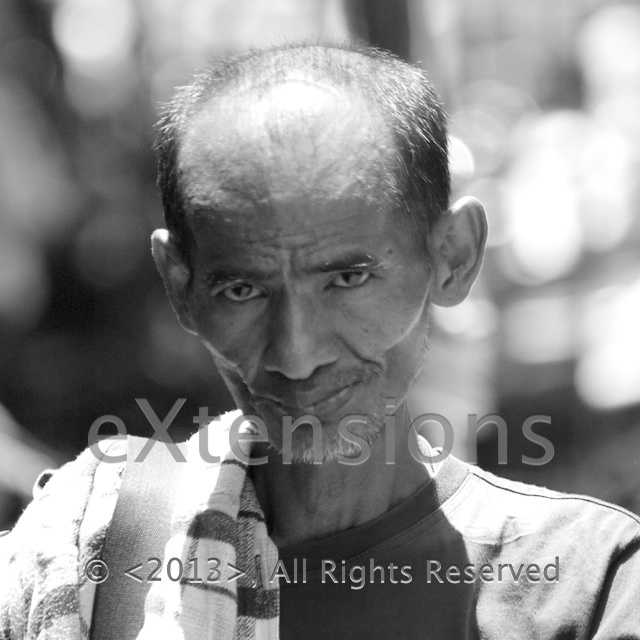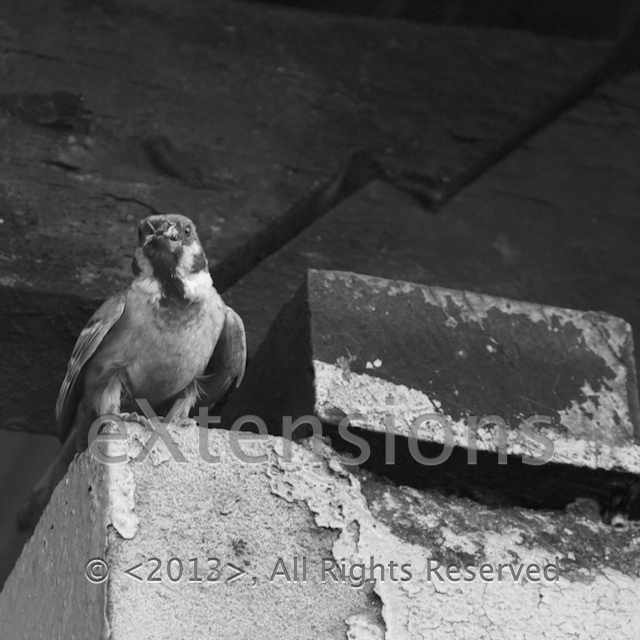|
By Graham K. Rogers

I am on vacation so I try to lay down the pen (metaphorically) and pick up the camera. Not far from where I live is a railway and a station. Not the BTS extension that was recently opened at Thalad Plu, but an older Thaladphlu, the second station on a line that runs from Wongwianyai to Samut Sakhon: Mahachai. I did take a couple of rides last year down to Mahachai and onto the second part of the railway that starts across the river at Ban Laem and ends by going through a market and terminating at Mae Klong.
This year I have three cameras: the Nikon D7000 which has the Nikor 25mm lens; the older Nikon D70 with a Tamron 70 - 300mm telephoto lens; and the iPhone. Much as some dogmatic people disparage smartphones as cameras, lots of people use these and get much enjoyment out of their use.
A real advantage in one way is that the iPhone will include GPS coordinates with a photograph and, if all photos taken with the DSLR camera (which do not have GPS capabilities) are in the same location, I am able to use a Lift and Stamp command: the data is lifted from one photo, and stamped onto another. This is more commonly done with adjustments, so for example today I lifted and stamped the monochrome settings on all pictures as a quick way to change them in one go.

As well as using monochrome only for all the output here, I also cropped the images using the Square format. This imposes an unusual decision-making process on me as I edit the pictures: I have to be careful what to leave in and what to cut out.
The days shooting produced 491 pictures: 320 from the D7000, 168 from the D70; and 3 from the iPhone. These were simply test shots and loaded up to Facebook to show location. I edited them down to 121 worthwhile images, then cut that down even more to 41, and cut that to 40.

And one more thing: with the recent passing of a law in the UK that makes it possible for news organisations to steal pictures if they claim they are "orphan images", for example those on social networking sites, there is no way I am putting my work online without a watermark. I do have the originals (in colour too) should anyone want to negotiate with me on this. Otherwise enjoy them as they are. If you use Safari on a Mac, or an iOS device, tapping the image will enlarge it.
After a week of shopping and visits to the dentist, I planned to repeat the trip to Mahachai, but the original plan for Wednesday had to be postponed. 24 hours later and I was standing on the platform at Thaladphlu with my ticket in hand. Rather than see the train arrive from the direction of Wongwianyai, it came the other way, running late. By the time it came back on the way out of Bangkok, it was quite late.
The reason was fairly clear within a short while as piled up beside the tracks in a number of places were the old sleepers (a concrete block with a steel bar). These were being replaced with more modern full width concrete sleepers, but this is not instant and at places the tracks had speed limits - these trains with one metre gauge tracks are never particularly fast anyway - but this resulted in cumulative delays: trains just got later as the day wore on.
Some advice for those taking photos on a train, sit facing the way the train is going. If you face the other way, by the time you have seen a shot, it has gone. The nice lady having her lunch left the train after about 30 minutes, so I was able to face the right way.
Some more advice for those using the line from Wongwianyai to Mahachai: on the way out of Bangkok, sit on the left side (and on the way back, the right side). It is far more interesting.
Not far out of Mahachai, I took some pictures of the old diesel-electric rail cars that sit rusting at the side of the line. In a chat with one of the workers at the maintenance depot later, he told me that those trains were the very first such units on any railway in Thailand.
I asked about steam, as the line had been first built to carry fish catches to the markets in Bangkok, and he gave me that single Thai word, Naan (a long time) that seems to stretch depending on the length of time. In this case it was Naaaaaaaaaaan: a really long time. As for the steam trains that used to be at Makasan, he confirmed what I knew: that these are now at Thonburi, just across the road from Siriraj Hospital.
Leaving the station I found a lunch spot - noodles - near the river, then wandered for an hour or so taking photographs, although in the middle I was phoned by a colleague who wanted my views on potential changes in teaching English.
He was the only one who asked, but there may be some who want to make fundamental changes and the last person they ask whenever English is concerned is the guy who has to teach it.
The same goes with other such output: we are so good we don't need help, so the university ends up with error-laden posters, brochures, and even a video I saw recently. But what do I care? It may be time to choose a bridge to burn.
Back at Mahachai it was hot (I am sunburned - a rarity) but the boats are always worth photographing - including the old man padling his boat across the river using plates as oars. People are sometimes the best subjects if you can catch them unawares. Birds too.

While waiting for the late 14:25 train, I watched a sparrow catching insects. The bird watched from the eaves and when a bug landed on the track, the heat may have stunned it briefly, so each time the sparrow swooped down, grabbed the insect and flew back onto the roof. Smart bird: good strategy.
On the way back I managed to grab a seat on the left, facing the way I was going so had the two cameras ready. At one stop, hundreds of kids from a high school and a college (different clothes) got on. They were high spirited, energetic, but they were not at all impolite.
Most of these kids got off the train long before Wongwianyai, so apart from a brief period of noisiness, the journey was reasonable quiet. Once or twice ont the way back the repairs caused the train to go slowly and there was some side to side lurching, but this is a small price to pay and I am glad that the line is seeing some investment.
It does not have such a public profile as the BTS, nor the more well known main routes to Chiang Mai and to the Northeast, but this (and the line to Mae Klong) deserve to be kept running.
Graham K. Rogers teaches at the Faculty of Engineering, Mahidol University in Thailand. He wrote in the Bangkok Post, Database supplement on IT subjects. For the last seven years of Database he wrote a column on Apple and Macs.
|





